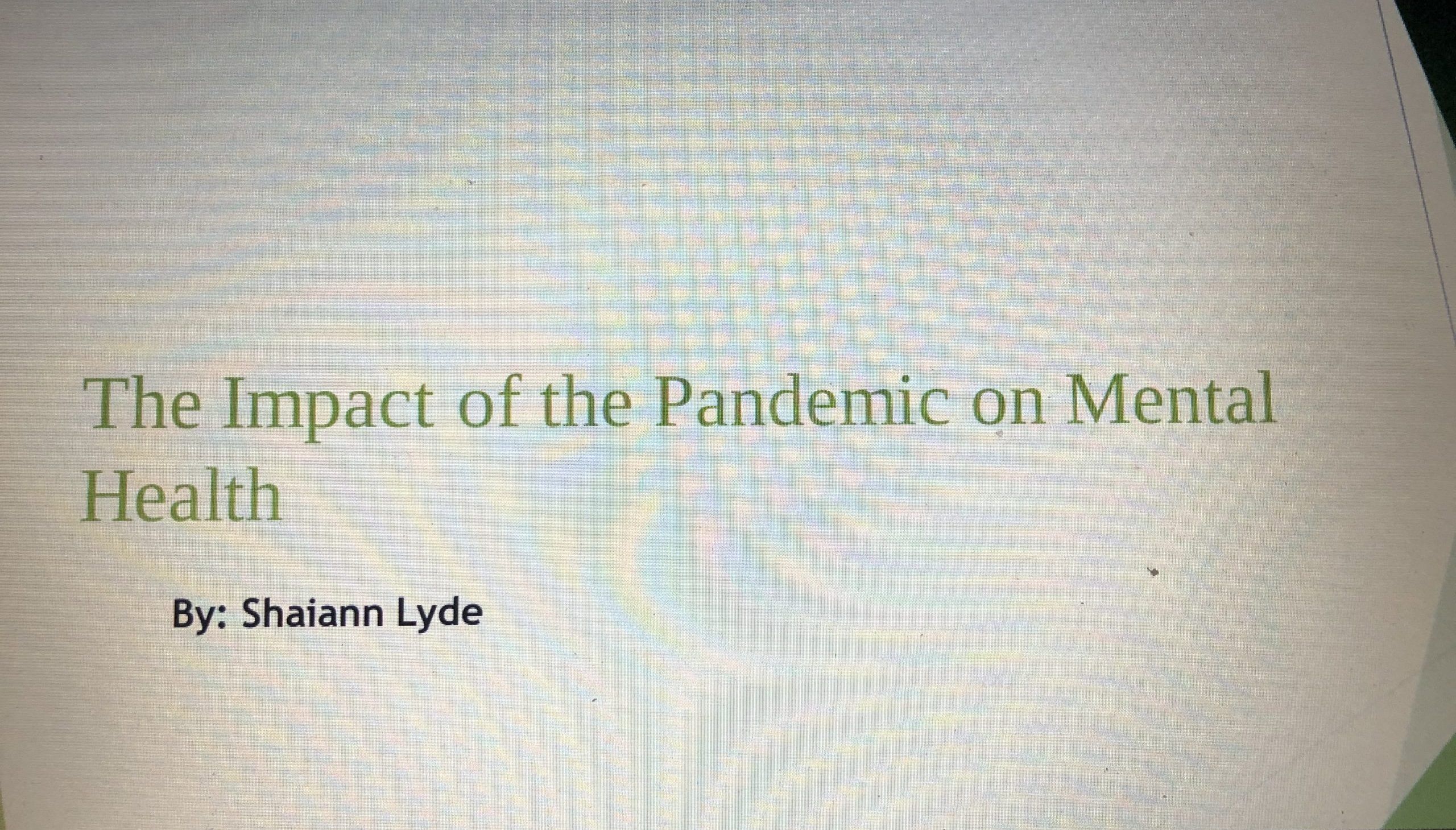The awareness of mental health needs to be spread all the time especially during a pandemic, a Cabrini senior said.
“There are so many people who have some type of mental issue that they are not able to discuss or they don’t feel comfortable,” Shaiann Lyde told an audience over Zoom during her Cabrini Day presentation. Shaiann Lyde, senior health science major, participated in Cabrini Day with a presentation called The Impact of Pandemic on Mental Health.
Cabrini Day is dedicated to letting social justice take center stage through the selected theme. This year’s theme is COVID-19 and Human Dignity. Cabrini Day was held virtually this year because of COVID-19.
The first slide of the presentation talked about the reasoning behind discussing mental health and defining mental health and its warning signs.
“Mental health is defined as emotional, psychological and social well-being that affects how we think, feel and act,” Lyde said. “The warning signs are eating or sleeping too much or not enough, having little to no energy, feeling helpless or hopeless and having unexplained aches & pains.”
The second slide of the presentation talked about eating disorders. Lyde defined what an eating disorder is, what types of eating disorders, who eating disorders occur to and multiple different statistics around eating disorders.
“An eating disorder is a disorder that is a constant eating behavior which can cause a negative impact on someone’s health, emotions and functions,” Lyde said. “The main eating disorders are anorexia nervosa, bulimia nervosa and binge eating.”
“Eating disorders doesn’t always mean eating all the time,” Lyde said. “It could also mean refusing to eat like anorexia.”
Lyde moved on to discuss about depression. This slide talked about what depression is, multiple statistics about depression and who depression affects the most.
“Depression is a mood that causes a persistent feeling of sadness and loss of interest,” Lyde said. “One day you have all the energy in the world and then all of the sudden you don’t want to do anything.”
“One in four adults ages 65 and older (24 percent) have reported having depression in August 2020, which has been constant since the pandemic started in March,” Lyde said.
The fourth slide of the presentation was about Anxiety & Panic Attacks Related to Covid Symptoms. This slide talked about what anxiety was & its symptoms and defined what a panic attack is and its symptoms. Also, it explains the difference between COVID-19 and anxiety/ panic attacks.

“Panic attacks are intense fear or discomfort that can become extreme within minutes and the symptoms are chest pain, shortness of breath, feeling dizzy or unsteady and chills or heat sensations,” Lyde said.
“Anxiety is a feeling of nervousness, fear, tension, worry or negative thoughts and its symptoms are shortness of breath, rapid heartbeat, trouble concentrating and difficulty sleeping,” Lyde said.
“Differences in COVID- 19 symptoms and anxiety/ panic attacks are panic attacks that last between 15 to 20 minutes and the virus includes a fever and a cough,” Lyde said.
The fifth slide of the presentation was about obsessive-compulsive disorder (OCD). The slide went on about what OCD is, individual struggles with OCD, the symptoms of OCD and the effect of COVID-19 on people with OCD.
“OCD is unwanted thoughts and fears that cause repetitive behaviors,” Lyde said. “Covid has caused people with OCD suicidal ideals, sleep deprivations, work difficulties and increased internet searching.”
Lyde continued on with Post-traumatic stress disorder (PTSD). The slides goes on about what PTSD is, the signs of PTSD and the effect PTSD has on children.

“PTSD is mental health condition that is triggered by horrifying events through experience or witnessing it,” Lyde said. “Many military members have this due to past events.”
“Signs of PTSD: Overwhelming sadness, having flashbacks and nightmares, being fearful and angry, avoiding memories of the situation,” Lyde said. “This is triggered by an event that has happened.”
The seventh slide is about Coping Methods. The coping methods are Finding activities that are meaningful, Learn to reach out for help, Getting enough sleep, creating healthier food choices, following the guidelines that are provided and staying connected with family and friends.
“One example of this CDC has hotlines for those suffering from stress, anxiety and depression,” Lyde said.
The final two slides are all references with all the information Lyde researched for her presentation. Some of the references are about PTSD, eating disorders and mental health.



